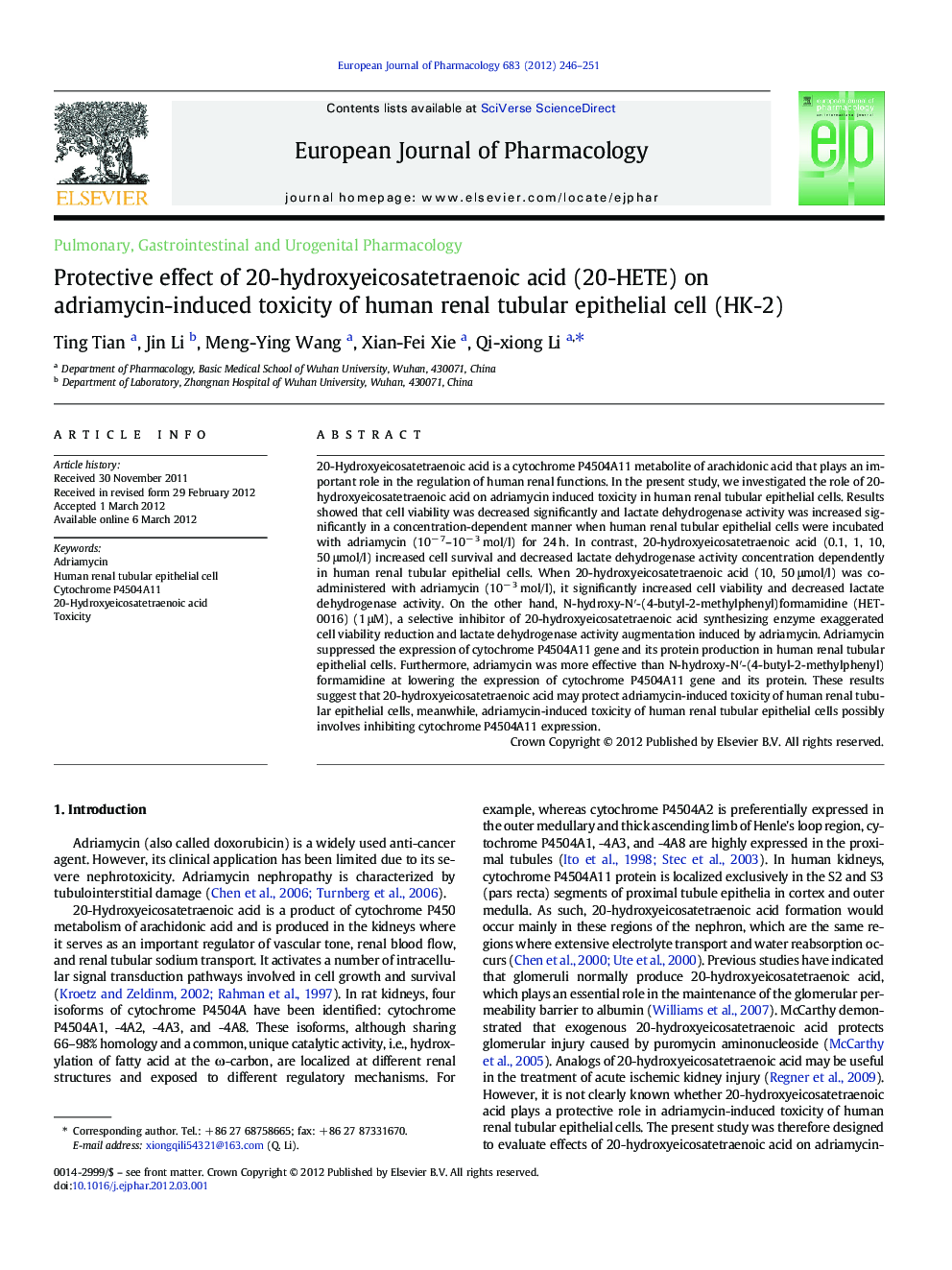| Article ID | Journal | Published Year | Pages | File Type |
|---|---|---|---|---|
| 5829644 | European Journal of Pharmacology | 2012 | 6 Pages |
Abstract
20-Hydroxyeicosatetraenoic acid is a cytochrome P4504A11 metabolite of arachidonic acid that plays an important role in the regulation of human renal functions. In the present study, we investigated the role of 20-hydroxyeicosatetraenoic acid on adriamycin induced toxicity in human renal tubular epithelial cells. Results showed that cell viability was decreased significantly and lactate dehydrogenase activity was increased significantly in a concentration-dependent manner when human renal tubular epithelial cells were incubated with adriamycin (10â 7-10â 3 mol/l) for 24 h. In contrast, 20-hydroxyeicosatetraenoic acid (0.1, 1, 10, 50 μmol/l) increased cell survival and decreased lactate dehydrogenase activity concentration dependently in human renal tubular epithelial cells. When 20-hydroxyeicosatetraenoic acid (10, 50 μmol/l) was co-administered with adriamycin (10â 3 mol/l), it significantly increased cell viability and decreased lactate dehydrogenase activity. On the other hand, N-hydroxy-Nâ²-(4-butyl-2-methylphenyl)formamidine (HET-0016) (1 μM), a selective inhibitor of 20-hydroxyeicosatetraenoic acid synthesizing enzyme exaggerated cell viability reduction and lactate dehydrogenase activity augmentation induced by adriamycin. Adriamycin suppressed the expression of cytochrome P4504A11 gene and its protein production in human renal tubular epithelial cells. Furthermore, adriamycin was more effective than N-hydroxy-Nâ²-(4-butyl-2-methylphenyl)formamidine at lowering the expression of cytochrome P4504A11 gene and its protein. These results suggest that 20-hydroxyeicosatetraenoic acid may protect adriamycin-induced toxicity of human renal tubular epithelial cells, meanwhile, adriamycin-induced toxicity of human renal tubular epithelial cells possibly involves inhibiting cytochrome P4504A11 expression.
Related Topics
Life Sciences
Neuroscience
Cellular and Molecular Neuroscience
Authors
Ting Tian, Jin Li, Meng-Ying Wang, Xian-Fei Xie, Qi-xiong Li,
